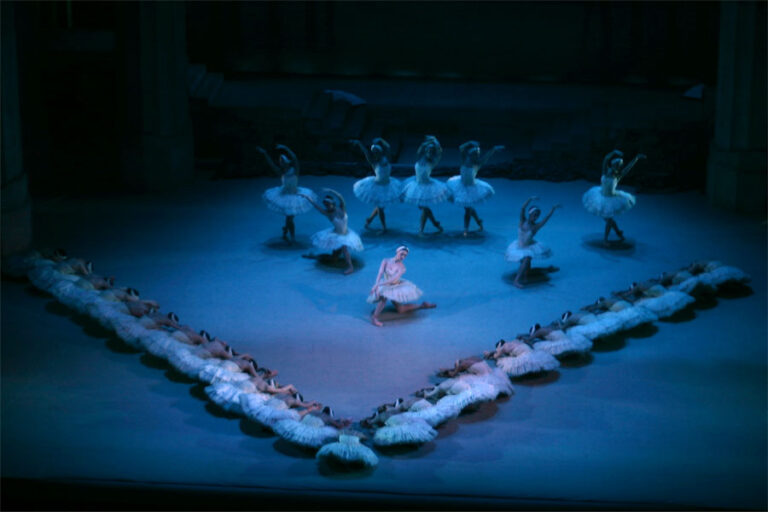When Dolores Haze Gets a Tumblr: Online “Nymphet” Culture and the Reclaiming of Lolita

Vladimir Nabokov’s Lolita is often spoken about as a novel that has been misinterpreted – not only by a patriarchal popular culture but often by the same young, vulnerable girls that would be prey to a man like Humbert Humbert. In most literary criticism of the novel, and in the preface of the novel itself, attention is repeatedly drawn to its aesthetics, its rarefied elegance, and how this same elegance is part of its horror – distracting a reader from the banal cruelty and evil of the narrator’s kidnapping and rape of a 12-year-old girl.
The beauty of the novel, Nabokov’s mastery of language, its dark playfulness, is seductive, and there are too many who allow aesthetics to trump disdain for the novel’s narrator, the cruel, clever, sophisticated Humbert Humbert. So it’s understandable that when a number of Tumblr bloggers – most of them girls younger than 16 – start calling themselves “nymphets” and reblog stills from the films, quotes from the novel, and share posts on how to “dress like a nymphet,” any onlooker would be alarmed, convinced that these young girls are self-fetishizing, succumbing to a patriarchal popular culture that has taken the figure of a kidnapped and abused little girl and turned her into a tiny seductress. In many cases, that could be entirely true. But as any anthropologist could tell you, the ways in which cultural figures are produced and the ways in which they are received and processed in lived reality are very different, and often far more complex than can be described.
Recently, alongside “Lolita” fashions using the iconography of childhood, and the music of Lana del Rey, which makes frequent reference to the novel and relationships with older men, a fascinating online “culture” has developed, centred mostly on Tumblr, and fueled by young women who seem to relate deeply to the novel and the film adaptations. On the surface, this ends up seeming like self-fetishization. Sarah K. Cleaver, in looking at this particular Tumblr phenomenon, says that “These girls are wasting their youth fetishising it, treating it as a theme to be curated, collected and carefully documented.” She highlights how “all Lolita blogs are sad.” But instead of looking at why that is, why is this deep affinity drawn again and again and so deliberately to a wronged girl, Cleaver writes this off as teenage angst, “youth wasted on the young.” That argument feels simplistic to me, and borderline ageist. Firstly, who is to determine what a “waste of youth” is? Surely the girls in ownership of their own youth are the ones to make that call? Secondly, if we look at the wider socio-political context of Lolita blogs, in which the bodies of young girls are continually claimed, fetishized, vilified, it makes perfect sense that a young girl would relate to a character who has had the same done to her – not only in the novel, but in the years of pop culture since the novel’s reception. I know I did. I know I still do.
I wrote an essay about watching Adrian Lyne’s 1997 adaptation of “Lolita”, relating it to my experiences of sexual abuse as an adolescent, and the experience of reading the novel. A paragraph from the essay was quoted on Tumblr and found some traction on these same nymphet blogs. At the risk of self-promotion, here is the quote: “But there it is, I watch Lolita and see me, see Dolores stand with her dog in the dust. I see the man who realizes he loves her long after the fact and the fact and the fact. All the sordid ways we maim each other with lust and lying, after the fact and the fact, till he’s the one saying, don’t touch me, I’ll die if you touch me. She’s a ghost who leaves her bobby pins behind to be wept over by her murderer. She’s a fixation in his blood. She never gives him peace, only brings him ruin. I watch this film, and feel avenged. I paint my lips red. I call on each powerful ghost who once was an ordinary girl.”
And this is where something darker, more complex, and more powerful shows itself. The blogs this was shared on had the standard nymphet blog fare: stills from movies with “age-gap” relationships – American Beauty, Leon: The Professional, Stealing Beauty, and of course, Lolita. Lines from Lana del Rey songs. Quotes from the novel. Straight-up dd/lg porn. But also that quote.
You see, in the novel, as well as the films, particularly the one by Adrian Lyne (which far outstrips Kubrick’s version in both faithfulness to the novel and representation on nymphet blogs), it’s the very ordinary-ness of her girlhood that becomes charged with meaning, beauty, dreadful power. Humbert clutches one of her abandoned bobbypins as he drives on the wrong side of the road, eyes dazed, covered in Quilty’s blood. When she leaves for summer camp, Humbert dives into a pile of clothes in her cupboard, pours over her tacked-up magazine cutouts on the wall, clutches her teddy bear as he reads the letter from Charlotte Haze. She clacks a jawbreaker in her mouth, drumming on his headache till he snaps, “What is that?” And she sweetly says, “A jawbreaker. It’s supposed to break your jaw. Want one?” And after he forces his hand into her mouth to take it out, she dons a pair of cheap plastic sunglasses and turns to him, saying, “You look a hundred percent better when I can’t see you.”
She’s essentially and always a teenage girl, not a temptress, not a succubus or a demon, but a little girl, seen so acutely, so powerfully, that she is written into legend, written into his blood and memory like a curse. The novel describes everything from her eyelashes to her toenails. Her voice shouts out now and then through the flowery words, the elaborate magical misdirection, and these are the moments when the novel is most powerful. When Humbert, along with the reader, knows that there is “in her a garden and a twilight, and a palace gate – dim and adorable regions which happened to be lucidly and absolutely forbidden to me, in my polluted rags and miserable convulsions…”
A while ago, a post made the rounds of nymphet blogs warning girls about a predator who was following blogs and trying to get nude pictures from the underage girls who ran them. The nymphet community named and shamed him, blocked him, warned each other. Their takedown of a middle-aged predator was swift, merciless, and glorious.
This, this is where that same garden and a twilight becomes a thing to both process trauma – all kinds, from real-life abuse to the everyday violence of living as a girl and a child in the world – and a place to claim the heart-shaped sunglasses, the daisy chain, the lipgloss, luminous from the rarefied and obsessive lens centred on the everyday details by the novel and films. To claim back one’s eyelashes and toenails and “awful juvenile clichés,” seen, seen so acutely, made into a weapon, written golden into memory to haunt, perplex, destroy that eternally pathetic, eternally convulsing man.
This makes me believe there is something more complex and interesting happening in the claiming of the “Lolita” image: a subversion and reclamation of images that fetishize, subjugate, and dehumanize into images of power, beauty, and danger. Using Lolita, the figure of the nymphet that is both ruined by and ruinous to her abuser, these girls are both telling a story – of autonomy being usurped, of being abused and claimed and harmed – and using the formidable power of ghosts – to haunt, to remind, to destroy from within. In this way, it becomes an act of subversion, an act of catharsis. In the novel, Humbert describes a nymphet as “the little deadly demon among the wholesome children; she stands unrecognized by them and unconscious herself of her fantastic power.” In claiming the image of Lolita, on one’s own terms, for one’s own ends, to embody a history, to haunt, to ruin, perhaps the Tumblr nymphet gets her revenge on Humbert by waking up “among the wholesome children”, acutely and powerfully conscious of just that power that is rightfully hers, all hers, to do with what she wills.


